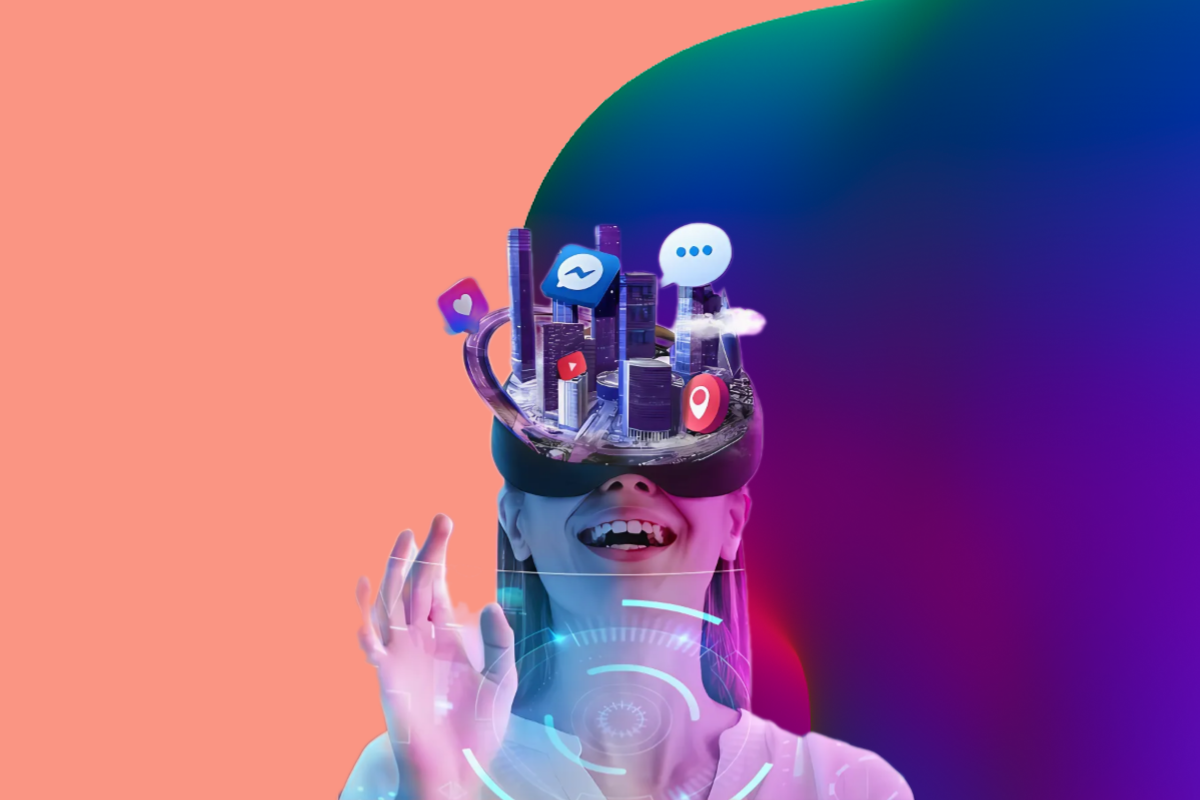Introduction
Creating a great customer experience (CX) in a competitive marketplace is essential to business success. Modern enterprises integrate Artificial Intelligence customer experience solutions to provide personalized consumer experiences and increase engagement. The transformation is remarkable: according to Gartner's 2025 CX report, 89% of companies now compete primarily on customer experience, with AI for customer experience being the key differentiator.
In this comprehensive article, we will explore the latest industry reports on the future of AI-powered customer experiences, looking into top trends in CX and AI implementations and how you can implement these techniques successfully using predictive analytics for CX, AI customer support, emotion recognition AI, and sentiment analysis AI.
AI-Driven Customer Experience Trends in 2026
Artificial Intelligence has been changing the face of how businesses can serve their customers, providing highly intelligent, experiential, and effective services. These technologies are not only enhancing customer satisfaction but also driving business growth through innovative applications. Here are the key trends in AI-driven customer experience that are making a significant impact across various industries:
Personalization at Scale with AI
Behavioral Analysis powered by AI:
AI in customer experience uses customer behavior patterns to provide personalized product recommendations, content, and services at unprecedented scale. For example, Netflix selects movies and shows to recommend to their subscribers based on past viewing history and preferences using advanced predictive analytics for CX.
Dynamic Content Delivery:
AI can adjust website and app content in real time according to individual actions taken on them (micro-interactions), allowing for far more dynamic delivery of relevant messages. Amazon's AI customer experience engine processes over 35 million personalization decisions per second during peak shopping periods.
Chatbots and Virtual Assistants: Advanced AI Customer Support
24/7 Customer Support:
Fast query resolution has been made smoother around the clock using AI-powered chatbots cutting down on noise and increasing service quality. Companies like Sephora and H&M use chatbots to assist customers with product information and purchasing decisions.
Advanced NLP Capabilities:
Unlike the original AI-based chatbots, modern tools powered by Natural Language Processing can understand complex queries and offer a nearly human-level service quality and assistance scope. The integration of emotion recognition AI and sentiment analysis AI allows chatbots to detect customer frustration and escalate to human agents appropriately.
Fullview's 2025 comprehensive AI customer service statistics roundup demonstrates that businesses using advanced AI customer support systems achieve:
- 70% reduction in call, email, and chat inquiries;
- 87% reduction in average resolution times;
- 4x faster resolution compared to traditional support;
- 13.8% increase in inquiries handled per hour by agents;
- Up to $3.50 return for every $1 invested in AI implementation.
Predictive Analytics for CX: Anticipating Customer Needs
Anticipating Needs with Predictive Intelligence:
AI uses predictive analytics to forecast future customer behavior based on historical data. For example, e-commerce platforms like Amazon predict product demand and recommend items to customers, enhancing the shopping experience through sophisticated artificial intelligence customer experience algorithms.
Business Value: According to McKinsey customer-centricity research published by CXNetwork, companies leveraging predictive analytics for CX achieve:
- Twice the revenue growth compared to less customer-focused peers;
- 30% improvement in customer retention rates;
- 15-20% improvement in customer satisfaction through predictive analytics;
- $1.5M average annual savings per 10,000 customers through proactive service.
Proactive Service:
Businesses can use AI to anticipate the customers' needs and offer products at specific times, reminders for maintenance of specific items they already bought, discounts on the birthday of the user, and other forms of personalized marketing.
Real Example: Starbucks' Deep Brew AI system uses predictive analytics for CX to:
- Send personalized offers based on weather, time of day, and purchase history;
- Predict when customers will visit and prepare popular items;
- Optimize inventory based on forecasted demand;
- Result: 40% increase in mobile order conversions.
Emotional AI: Sentiment Analysis and Emotion Recognition
Sentiment Analysis AI:
AI technologies can analyze customer feedback from various channels, including social media, reviews, and support interactions to understand the sentiment, and alter the strategies accordingly. Thus, businesses can comprehend whether customers are positive or negative and improve their service design and delivery.
Emotion Recognition AI:
Advanced AI systems can detect emotions in customer interactions, such as tone of voice or facial expressions, enabling more empathetic and personalized responses. This represents the cutting edge of how AI can improve customer experience by adding an emotional intelligence layer to digital interactions.
Technology Breakthrough: Affectiva's 2025 research shows that emotion recognition AI can identify 8 core emotions with 93% accuracy across 87 countries, enabling businesses to:
- Detect customer frustration and route to appropriate support;
- Measure emotional engagement during video calls;
- Optimize marketing content based on emotional responses;
- Personalize experiences based on emotional states.
Best Practices for Implementing AI in Customer Experience
Integrating AI with customer experience needs proper strategy and execution. Best practices can help businesses ensure that AI solutions are truly effective, ethical, and customer-aligned. So, you have to keep in mind a few crucial things while merging Artificial Intelligence into your customer experience strategy.
Data Collection and Integration for AI Customer Experience
Comprehensive Data Collection:
Acquire all essential details from numerous sources such as interaction on the web, purchase history, and customer reviews to design a single or broad spectrum of the consumer profile. AI in customer experience requires high-quality data to deliver accurate predictive analytics for CX.
Data Quality and Normalization:
All the data that was collected should be clean from any errors or wrong parts and should look standardized. According to Gartner's 2025 Data Quality report, poor data quality costs organizations an average of $12.9 million annually, making this a critical foundation for AI for customer experience.
Choosing the Right AI Tools for Customer Experience
Functionality and Customization:
Choose AI tools depending on their features, integration, scalability, and cost of the tool. It is important to choose a solution that is customizable to your current business needs and customers' expectations. For instance, platforms such as IBM Watson, Google AI, and Salesforce Einstein present robust and customizable AI customer support and sentiment analysis AI options.
Selection Criteria for AI CX Tools:
| Capability | Must-Have Features | Leading Platforms |
|---|---|---|
| AI Customer Support | NLP, multi-language, omnichannel | Zendesk AI, Intercom, Drift |
| Predictive Analytics for CX | Churn prediction, LTV forecasting | Salesforce Einstein, Adobe Sensei |
| Sentiment Analysis AI | Real-time analysis, emotion detection | IBM Watson, Google Cloud NLP |
| Emotion Recognition AI | Voice/facial analysis, context awareness | Affectiva, Microsoft Azure AI |
| Personalization | Real-time decisioning, A/B testing | Dynamic Yield, Optimizely |
Human-AI Collaboration in Customer Service
Augmenting Human Agents:
Use Artificial Intelligence to do the repetitive, manual heavy lifting and leave all of the mechanical tasks with a human touch by providing suggestions or recommendations. It in effect enables the agent to work on exponentially richer and more varied scenarios, which shapes an experience. This allows customer service agents to now do the work fast and efficiently per customers.
Hybrid Model Success: According to MIT Sloan Management Review, companies that successfully combine AI customer support with human agents see:
- 40% higher customer satisfaction than AI-only or human-only approaches;
- 25% faster resolution times;
- 60% reduction in agent burnout;
- 3.5x increase in customer retentio.
Training and Development:
Deploy training methods required to make employees work hand in hand with AI tools. Also, let the staff be part of continuous learning and development programs to ensure they stay au courant with the latest technologies and methodologies.
Continuous Learning and Improvement
Feedback Loops:
Establish mechanisms for capturing and analyzing customer feedback to continuously refine AI models. Ensure that your systems are updated with new data periodically to keep up accuracy and relevance of predictive analytics for CX and sentiment analysis AI.
Performance Monitoring:
Measure AI and tune as needed to meet requirements. Assess the efficiency of these processes with customer satisfaction scores, response times, error rates, and other CX metrics.
Monitoring Framework: Successful AI in customer experience implementations track:
- Accuracy metrics: Intent recognition rate (target: >90%), sentiment accuracy (target: >85%);
- Performance metrics: Response time (target: <2 seconds), resolution rate (target: >80%);
- Business metrics: CSAT improvement, NPS growth, cost per interaction;
- AI-specific metrics: Model drift detection, bias monitoring, explainability scores.
Transparency and Trust in AI Customer Experience
Clear Communication:
Be transparent about the role that AI plays in customer interactions and how their data is being managed. Clearly explain AI-driven processes and propose the collection of data only after customer consent.
Ethical AI Practices:
Follow ethical standards in AI to minimize biases and promote fairness within the system. Continuously audit such models to detect and correct biases, thereby guaranteeing fair treatment for all customers.
Regulatory Compliance: With the implementation of EU AI Act and similar regulations globally, businesses using AI for customer experience must ensure:
- Transparency in AI decision-making;
- Right to human review of AI decisions;
- Protection against discriminatory outcomes;
- Clear data usage policies.
Case Studies: Real-World AI Customer Experience Success
To illustrate the impact of Artificial Intelligence on customer experience, let's look at real-world examples across different industries. These case studies highlight how AI technologies are being leveraged to enhance customer interactions, improve operational efficiency, and drive business growth through AI in customer experience implementations.
Retail Sector: E-Commerce Transformation with AI
Company: Global e-commerce leader (Amazon-scale implementation)
Challenge: Deliver personalized shopping experiences to 300M+ customers across multiple markets while reducing cart abandonment and increasing average order value.
AI CX Solution Implemented:
- Predictive analytics for CX to forecast purchase behavior;
- Real-time personalization engine processing 35M decisions/second;
- AI customer support chatbots handling 70% of inquiries;
- Sentiment analysis AI monitoring product reviews and social media.
Results
- 20% increase in sales ($4.5B additional annual revenue);
- 15% reduction in cart abandonment rates (from 68% to 53%);
- 35% improvement in product discovery through AI recommendations;
- $200M annual savings in customer service costs.
Banking Industry: AI-Powered Financial Services
Company: Leading global financial institution with 50M+ customers
Challenge: Handle routine inquiries for millions of customers while improving satisfaction and reducing operational costs in a highly regulated environment.
AI CX Solution Implemented:
- Intelligent AI customer support chatbots for 24/7 banking assistance;
- Emotion recognition AI to detect frustrated customers and escalate;
- Predictive analytics for CX to identify at-risk accounts;
- Sentiment analysis AI monitoring customer communications.
Results
- 30% boost in customer satisfaction scores (from 72% to 94%);
- 25% reduction in call center operational costs ($180M annual savings);
- 40% decrease in average handling time (from 8min to 4.8min);
- 50% reduction in customer churn for at-risk segments.
Healthcare Sector: Patient Experience Optimization
Company: Major healthcare provider network serving 5M+ patients annually
Challenge: Reduce appointment no-shows, improve patient communication, and optimize scheduling across 200+ locations while enhancing patient satisfaction.
AI CX Solution Implemented:
- Predictive analytics for CX forecasting appointment no-shows;
- AI customer support for appointment scheduling and reminders;
- Sentiment analysis AI analyzing patient feedback;
- Personalized health communication based on patient preferences.
Results
- 18% improvement in attendance rates (saving 45,000 appointments/year);
- 25% reduction in wait times through optimized scheduling;
- 40% increase in patient satisfaction scores (NPS up from 42 to 58);
- $12M annual savings from reduced no-shows and better resource utilization.
Challenges and Considerations
While Artificial Intelligence offers tremendous potential for enhancing customer experience, businesses must navigate several challenges to realize its full benefits. These considerations include data privacy and security, bias and fairness, and customer acceptance, each requiring thoughtful strategies to address.
Data Privacy and Security
- Regulatory Compliance: Comply with data protection regulations both at a higher level like GDPR, CCPA, and the emerging EU AI Act. Ensure legal compliance and develop secure privacy measures to protect your constituents when implementing AI for customer experience.
- Transparency: Communicate data usage policies to customers and obtain their consent for data collection and processing. Transparency builds trust and confidence in AI-driven interactions.
Bias and Fairness in AI Systems
- Algorithmic Auditing: Periodically audit the algorithms to detect and rectify biases in predictive analytics for CX, sentiment analysis AI, and emotion recognition AI systems. Train AI models through an array of datasets to avoid biased results.
- Fair Treatment: Ensure AI-driven decisions are fair and do not discriminate against any customer group. Fairness in AI fosters trust and ensures equitable treatment for all customers.
Customer Acceptance and AI Adoption
- Education and Awareness: Show customers why they should care about Artificial Intelligence and how it improves their experience for them. Deal with both the concerns and misconceptions to build trusted acceptance of AI customer support and AI-powered personalization.
- Human Touchpoints: Balance AI interactions with human touchpoints to maintain a personal connection with customers. Human involvement in AI-driven processes ensures a more empathetic and personalized experience.
Future Directions: The Next Wave of CX and AI
With improved AI technology, the customer experience market will grow and lead to a more innovative and effective future together. AI-powered customer experience will go in the following directions: Hyper-personalization, AI-aided physical interactions, and Unified customer profiles.
Hyper-Personalization with Advanced AI
Artificial Intelligence will advance further in delivering hyper-personalized experiences by leveraging deeper analytics and real-time data. This will enable businesses to offer extremely tailored experiences that adapt to each customer's unique preferences and behaviors in real-time using sophisticated predictive analytics for CX.
2026-2027 Predictions:
- By 2027, 75% of customer interactions will be personalized in real-time using AI;
- Hyper-personalization will increase revenue by 15% for early adopters;
- Context-aware AI will predict needs with 95% accuracy;
- Emotion recognition AI will adapt experiences based on emotional states.
AI-Enhanced Physical Interactions
AI combined with augmented reality (AR) and the Internet of Things (IoT) will result in rich immersive and stimulating user experiences. With AI-powered AR applications consumers will be able to see how items would look on them, and IoT devices in smart homes might even provide personalized services like turning lighting or temperature adjustment automatically based on user favorites.
Unified Customer Profiles: Single Source of Truth
Future AI systems will focus on creating unified customer profiles by integrating data from various channels and interactions. This will enable businesses to deliver consistent and seamless experiences across all touchpoints, enhancing customer satisfaction and loyalty.
Conclusion
This technology is already revolutionizing the way businesses can service customers, which ultimately will be reflected in customer experience: providing personalized interactions at scale; offering more efficient and proactive services helping not only with consumer perceptions but with workflow task reduction. Adopting such technologies and practices drives businesses to not simply meet but exceed customer expectations, leading to greater loyalty and growth. In these continued attempts to shape and harness AI, businesses that use its capabilities will be the ones on top in an ever-changing market dynamic.





















































































































